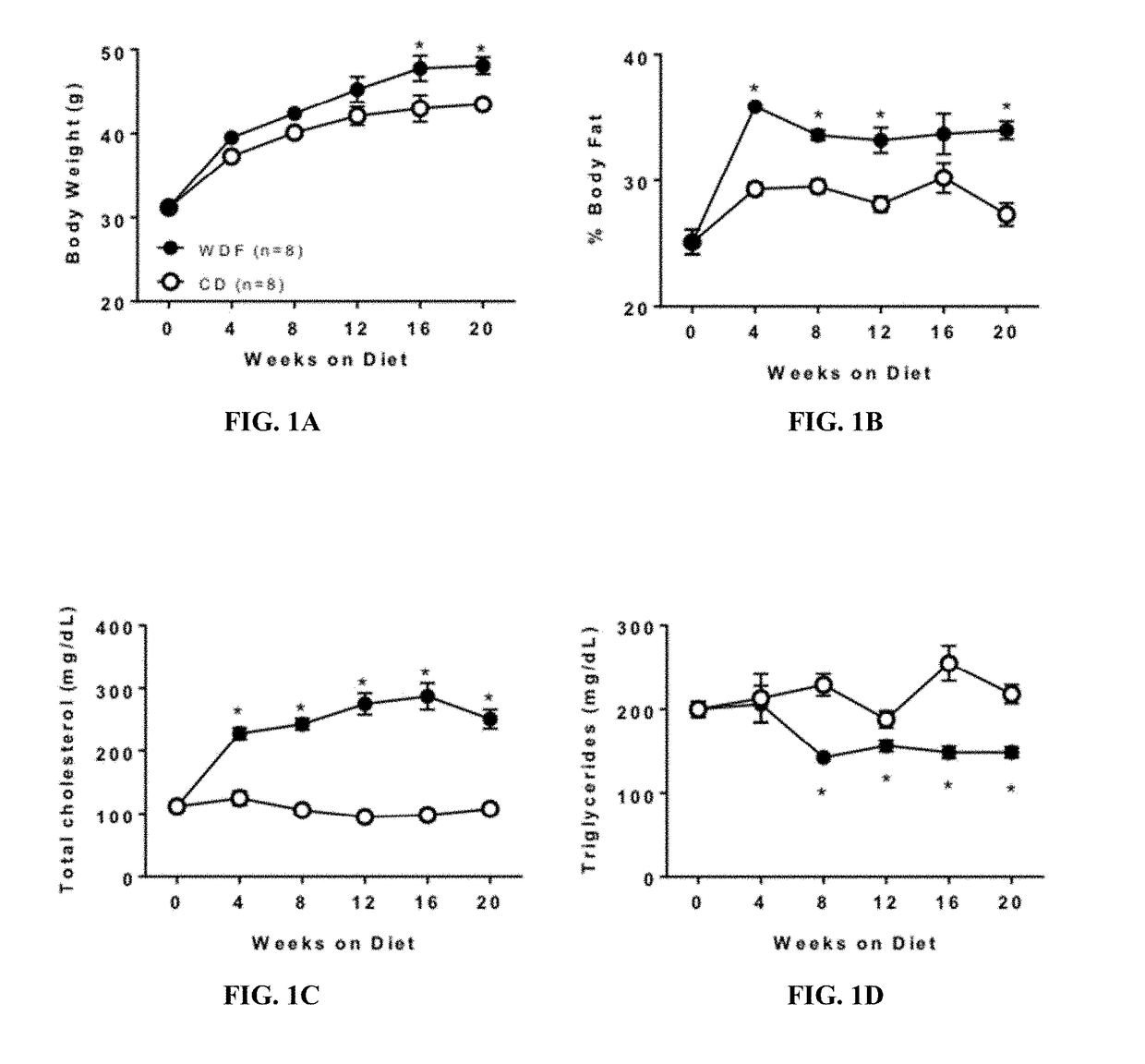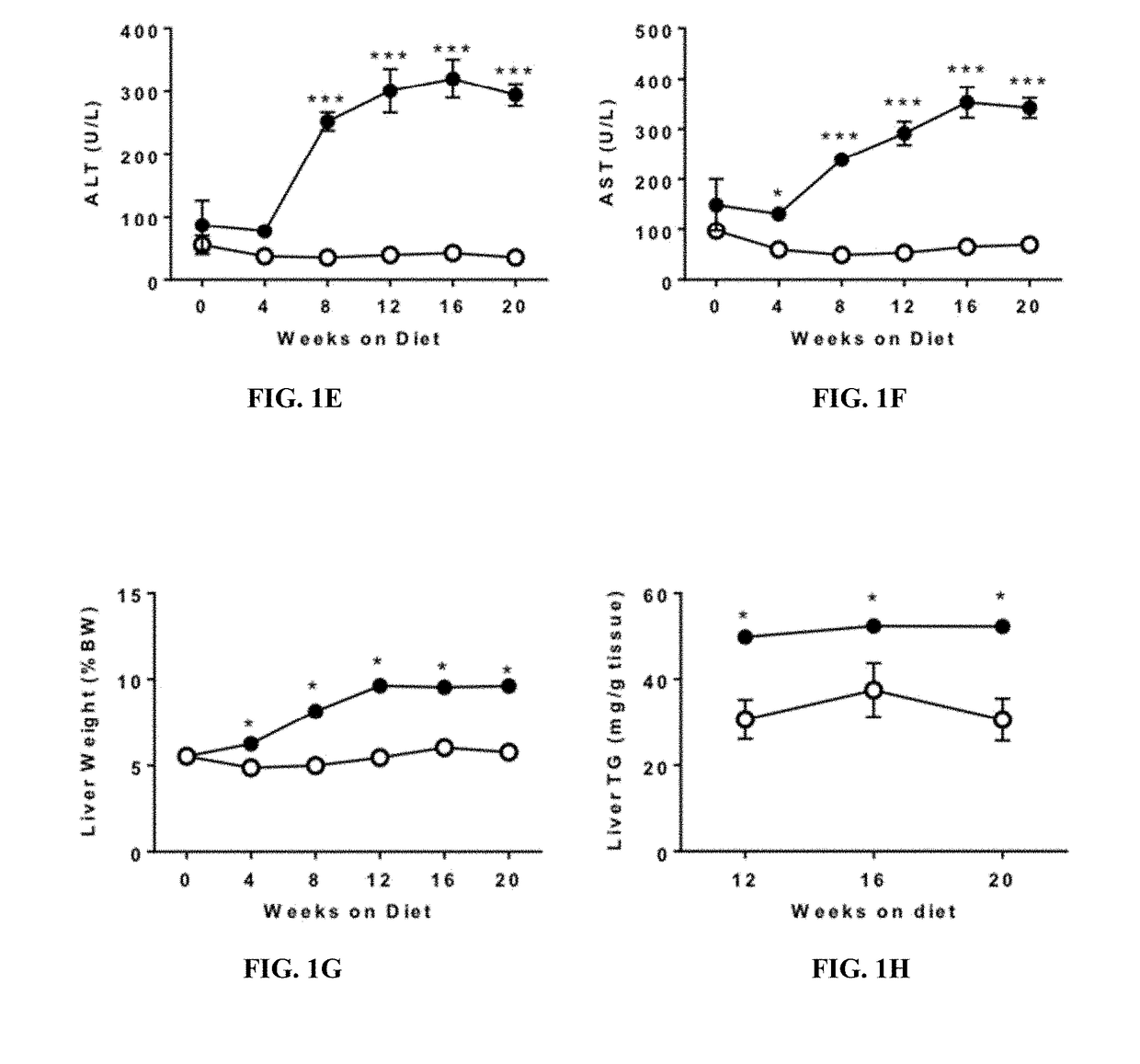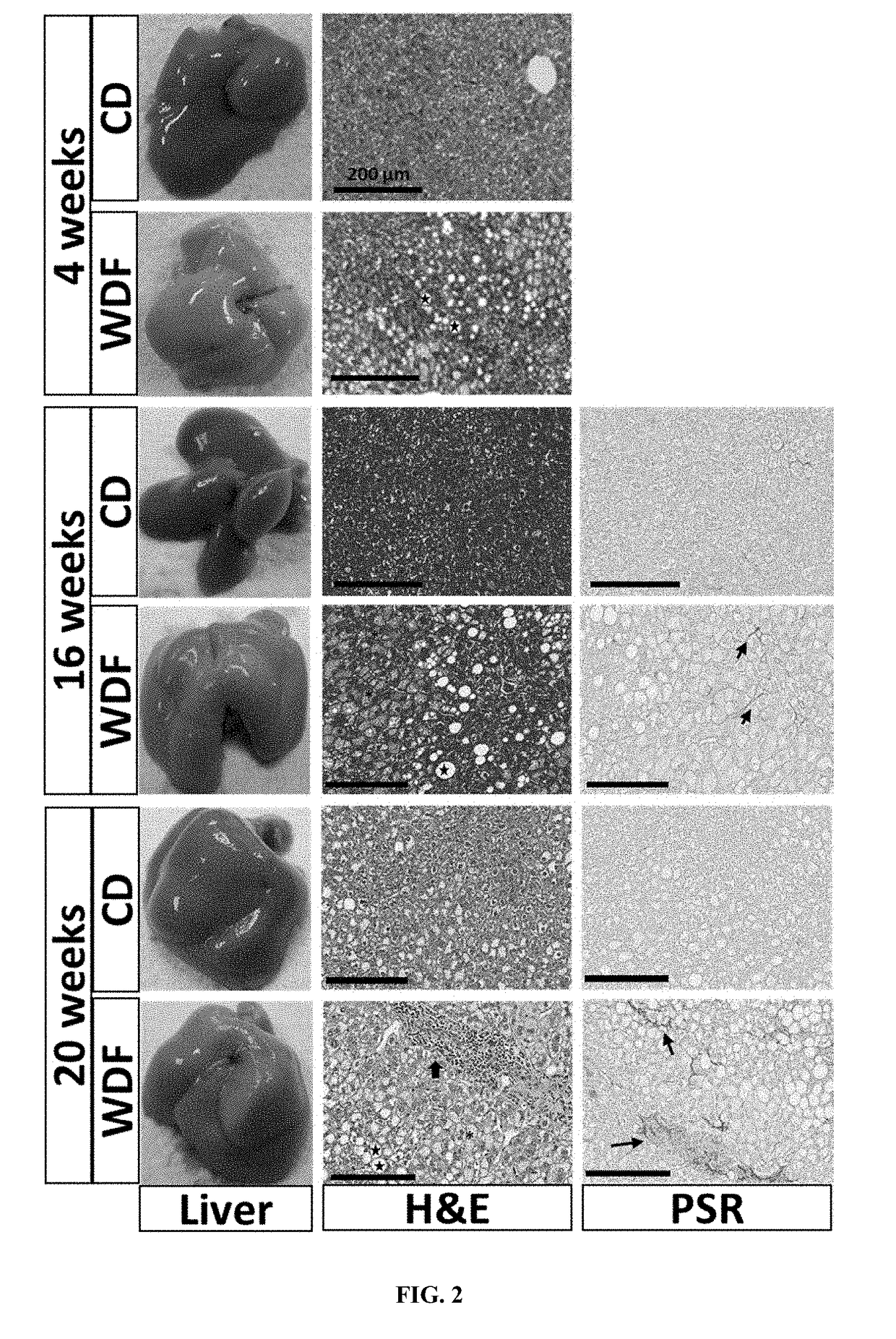Animal models for nonalcoholic fatty liver disease
- Summary
- Abstract
- Description
- Claims
- Application Information
AI Technical Summary
Benefits of technology
Problems solved by technology
Method used
Image
Examples
example 1
[0088]This example shows that the FATZO mouse fed with the WDF diet would generate a model of significant liver disease which would meet the criteria for a more translational animal model of progressive NAFLD and NASH.
[0089]Methods
[0090]Animal studies
[0091]Male FATZO mice (FATZO / Pco, n=88) were bred and maintained at the Crown Bioscience facility (Indianapolis, Ind.). Animals were housed individually and maintained on control diet of Purina 5008 chow (LabDiet, St. Louis, Mo.) and DI water ad libitum until study start. Mice at 8 weeks of age were randomized into 3 groups based on body weight. Additionally, to insure that all groups were matched according to insulin resistant state, fasting (6 hour) serum glucose and insulin levels prior to study start were used to calculate the additional randomization parameter (HOMA-IR). Randomized groups were assigned to 3 groups: 1. Control diet (CD) (n=32); 2. Western diet (D12709B, Research Diets, New Brunswick, N.J.) +5% fructose in the drinki...
example 2
[0112]This example illustrates the correlation of disease severity with body weight and high fat diet in the FAZTO mouse.
[0113]Materials and Methods
[0114]FATZO Production
[0115]FATZO mice in the breeding colony were maintained on Purina 5008 rodent diet and reverse osmosis water. Mice were bred between 6 and 10 weeks of age (optimally 7-8 weeks old). Animals were housed in a light (12 hr light / 12 hr dark) and temperature (25° C.) controlled environment.
[0116]The Effect of High Fat Diet
[0117]Male FATZO / Pco mice (n=48) were weighed (24-43 g) at 6 weeks of age and transferred from the CBIN colony (Crown Bioscience—Indiana, Indianapolis, Ind., USA) to Lilly Research Laboratories (Indianapolis, IN, USA) at 6-8 weeks of age. After acclimation, FATZO mice averaging 10 weeks of age were assigned to groups based on their 6-week weights as follows: Low BW (low weight, 23-26.9 g), Mid BW (mid weight, 27-29.9 g) and High BW (high weight, >30 g). At the initiation of the study, the average weight...
example 3
[0141]This example illustrates the glucose dysregulation and response to common anti-diabetic agents in the FATZO mouse
[0142]Methods
[0143]Age Related Changes in Glucose Homeostasis
[0144]FATZO / Pco mice were bred and maintained at PreClinOmics (now Crown Bioscience—Indiana). Male mice (n=72) were housed 2 per cage. Room temperature was monitored and maintained at 72-77° F. with the light cycle set at 12 hours (0600-1800 hr). Purina 5008 standard rodent chow and house water were provided ad libitum. Body weight, fed blood glucose and insulin were recorded at 2-week intervals from 6-22 weeks of age within two hours of the room lights coming on. Serum glucose was analyzed in fresh plasma using AU480 clinical analyzer (Beckman-Coulter, Brea, Calif., USA). Insulin content in plasma was determined from frozen sample using a mouse / rat insulin kit (Meso Scale Discovery K152BZC-3, Rockville, Md., USA).
[0145]Comparison to Age Matched Controls
[0146]In a parallel study, body composition and gluco...
PUM
 Login to View More
Login to View More Abstract
Description
Claims
Application Information
 Login to View More
Login to View More - R&D
- Intellectual Property
- Life Sciences
- Materials
- Tech Scout
- Unparalleled Data Quality
- Higher Quality Content
- 60% Fewer Hallucinations
Browse by: Latest US Patents, China's latest patents, Technical Efficacy Thesaurus, Application Domain, Technology Topic, Popular Technical Reports.
© 2025 PatSnap. All rights reserved.Legal|Privacy policy|Modern Slavery Act Transparency Statement|Sitemap|About US| Contact US: help@patsnap.com



